Welcome to a topic that might not be the most exciting but remains crucial for your well-being. Cozying up in our homes comes at the cost of keeping your indoor air quality top-notch and monitoring the furnace filter and its HVAC system performance.
So what is the big deal about filter maintenance?
The furnace filter may be small, but its impact is mighty! By regularly taking care of your furnace filter, you can ensure a fresher and healthier living environment. A clogged furnace filter does not purify dirt as efficiently.
If you want to breathe fresher air, understanding furnace filter importance is key to enhancing the performance of your HVAC system. It is like giving your heating system a spa day, and who doesn't want that?
If you haven’t replaced the filter in a long time, this blog will tell you just how. Let's explore the nitty-gritty of furnace maintenance, air filtration, and why timely filter replacements are the key to unlocking the full potential of your HVAC system.
Think of the furnace filter as a guardian angel that keeps the heating and cooling system of your house running. This requires paying attention to the function of furnace filters in maintaining healthy indoor air quality. Besides cranking out warm air during chilly days, it also works like a pro to keep the air you breathe clean and healthy.
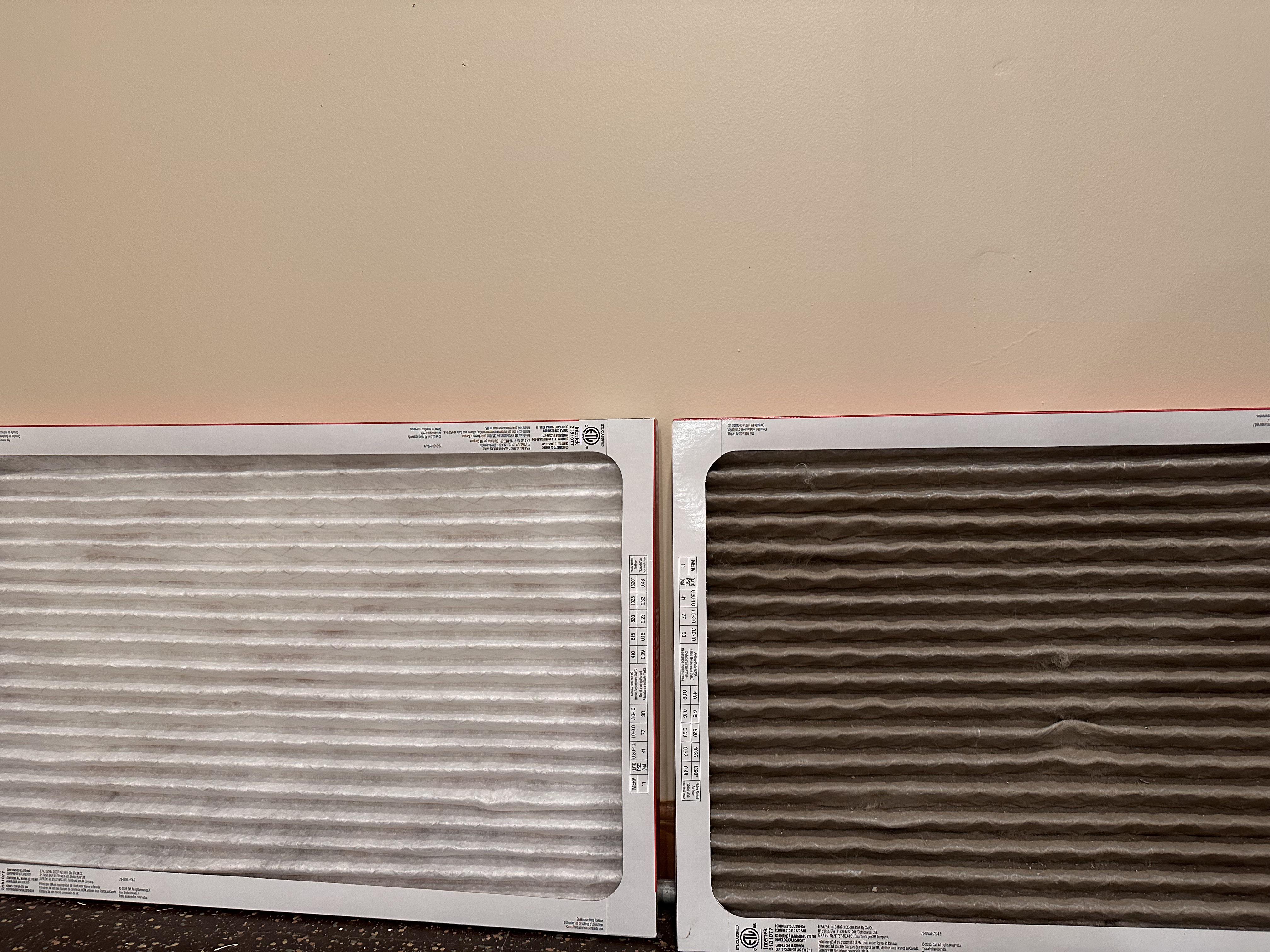
The primary function of a furnace filter is to trap airborne particles, such as dust, pollen, allergens and even mould spores that float around in your home. Air filtration is designed to catch all sorts of particulate matter and protect you from breathing in all those allergens and potential irritants.
Without a furnace filter, all the airborne particles would find their way into your heating and cooling system, causing serious damage. A clogged furnace filter and ducts reduce the efficiency of the system. This makes the AC work twice as much, resulting in higher energy bills.
Therefore, understanding the importance of regular filter replacements is key to keeping your air clean, and the HVAC system working smoothly throughout the season.
We are sure that all this information on health and energy issues with clogged furnace filters has got you worrying about your filter’s maintenance schedule. So, how often should you change furnace filters?
Before we get into the details, here’s a quick overview of the maintenance schedule that you can keep in mind for your filters:
| Type of Filter | Filter Change Interval |
| 1-inch fibreglass filter | 30 days |
| Pleated filter | 30 days |
| Electrostatic filter | 60 to 90 days |
| High-Efficiency Particulate Air filter | Six months to one year |
Although it is not a one-size-fits-all answer, we have general filter replacement guidelines to help you out. The recommended filter change intervals can vary based on factors like the type of filter, the air quality in your area, and how frequently you run your HVAC system.
For standard 1-inch fiberglass filters or basic pleated filters, it is better to check them every month. If you live in an area with moderate air pollution and you run your furnace regularly, this type of filter can get clogged up pretty quickly.
Similarly, with an upgrade to higher-quality pleated or electrostatic filters, you get away with changing the filter every two to three months. These filters are more efficient at capturing dust and tend to have a longer lifespan before needing replacement.
For those of you who have a HEPA (High-Efficiency Particulate Air) filter, you are in for some good news. These heavy-duty filters are of the finest quality. They can trap even the tiniest particles and typically last around six months to a year.

Although these are general guidelines, remember to check your furnace filter's manufacturer recommendations, as they might have specific instructions for your model.
To remember when it is time for a change, you can add it to your regular home maintenance schedule. Mark it on your calendar or set a reminder on your phone. A little bit of routine will go a long way in keeping your furnace and indoor air quality in top shape!
Listed below are some of the common air filter sizes and when you should be replacing them:
These filter replacement timeframes are variable if you live in an area with high pollution, smoke, or have pets. A clean filter not only ensures better indoor air quality but also helps your HVAC system run efficiently, saving you some bucks on energy bills.
How do you know if your furnace filter is begging for a replacement?
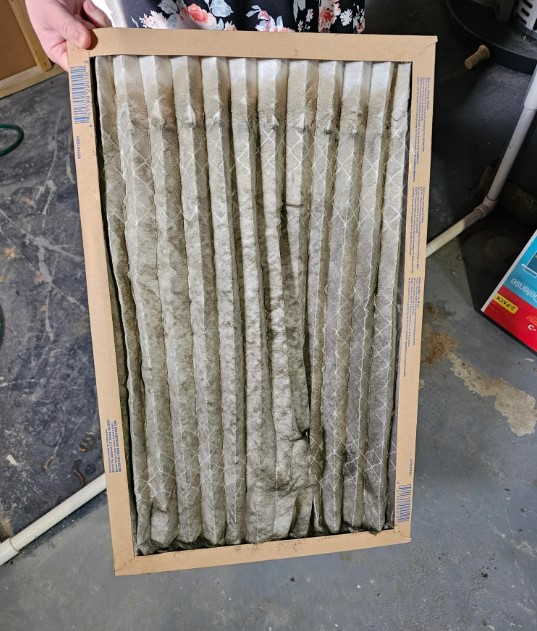
Let’s highlight some signs of a dirty furnace filter which indicate it is time for a replacement.
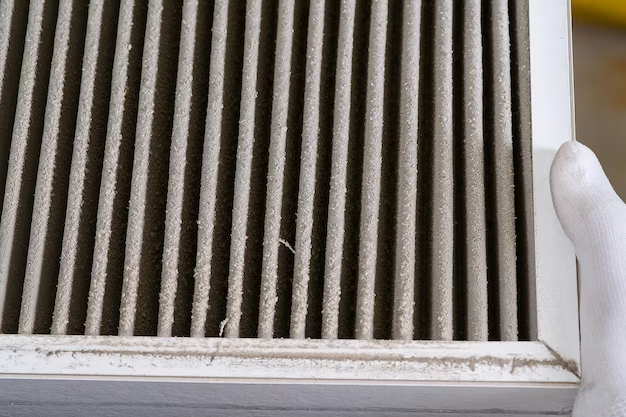
We often forget the consequences of neglected furnace filters and the impact it has on our quality of life. Let’s understand the effects of dirty filters so we can be prompt with filter maintenance.
Furnace filters contribute highly to keeping the air you breathe clean and fresh. When the filter gets dirty, it becomes less effective at trapping airborne contaminants. These can be health hazards as they float around, leading to sneezing, coughing, and exacerbating allergies or respiratory issues.
A dirty furnace filter also takes a toll on the HVAC system's efficiency. As the filter clogs up with debris, it restricts the airflow, forcing your heating and cooling system to work harder to maintain the desired temperature. This increased strain on the HVAC unit leads to higher energy consumption and bills.
When the furnace filter is neglected for too long, it can cause multiple problems simultaneously. The restricted airflow makes the blower motor work overtime, consuming more energy and shortening its lifespan. The furnace's heat exchanger may overheat, leading to potential damage and costly repairs.
Additionally, it can lead to temperature imbalance. Rooms farther away from the HVAC unit do not receive adequate airflow, making them feel chillier in winter and stuffier in summer.
Thus, regularly changing your furnace filter can save you from spending too much on repairing the whole HVAC system. This also ensures a healthier indoor environment for your family.
1. Manufacturer Recommendations
Although the standard practice of checking and replacing the filter every 90 days comes in handy, the manufacturer's recommendations hold more importance. The guidelines are based on careful engineering of the filter and its specifications.
Following these furnace filter change recommendations helps maintain the efficiency and longevity of your heating system. Paying attention to manufacturer recommendations regarding furnace filter change intervals ensures optimal performance, lower energy costs, and cleaner air.
It is best to follow a specific maintenance schedule that the company suggests as they know the ins and outs of it!
2. Air Quality and Environmental Factors
Environmental factors account mostly for furnace filter replacements. If your place is surrounded by exhaust fumes, factory emissions, and airborne particles, the filter is more prone to contamination!
Our furry companions contribute to pet dander. The fur or feathers can become airborne allergens that cling to the furnace filter’s surface. If you have a house full of pets, you might find yourself changing that filter more frequently to keep the air quality in check.
When the filter is constantly bombarded by pollutants and pet dander, it struggles to keep up with the demand for clean air. As a result, the lifespan decreases, and it might require more frequent replacement to maintain peak performance.
3. Occupancy and Usage Patterns
Other important aspects that govern filter replacement are the occupancy of the household, usage patterns and filter lifespan.
The first thing to consider is the occupancy of your home. The number of people under your roof influences the amount of air pollutants your HVAC system handles daily. More people often mean more dust, pet dander, and other airborne particles.
The size of the household is another factor. The square footage of the house affects how much air circulates through your HVAC system. Larger homes generally have more air to filter, which can lead to increased contamination of your filter over time.
A peek into your daily routines and usage patterns will also tell you about the filter’s usage. Do you enjoy the comfort of your home throughout the day, or are you out and about most of the time, only returning in the evenings?
The frequency with which you use your heating and cooling system directly impacts the workload on your filter. The more your HVAC system works, the faster your filter can get clogged with the particles.
You must find the balance between filter lifespan and filter contamination. A single person or a couple in a smaller home with low HVAC usage could go around 3 to 6 months before needing a replacement. Larger households with pets and higher HVAC usage may benefit from changing the filter every 1 to 3 months.
Next, we will tackle the furnace filter replacement task that will make home maintenance look super easy.
Let's ensure you have all the right tools and know safe installation techniques for DIY maintenance.
The first step is to turn off your furnace. Once that is done, locate the furnace's access panel. Usually, it is near the air intake or blower compartment or between the return air duct and the furnace. Gently remove the panel, exposing the old filter.
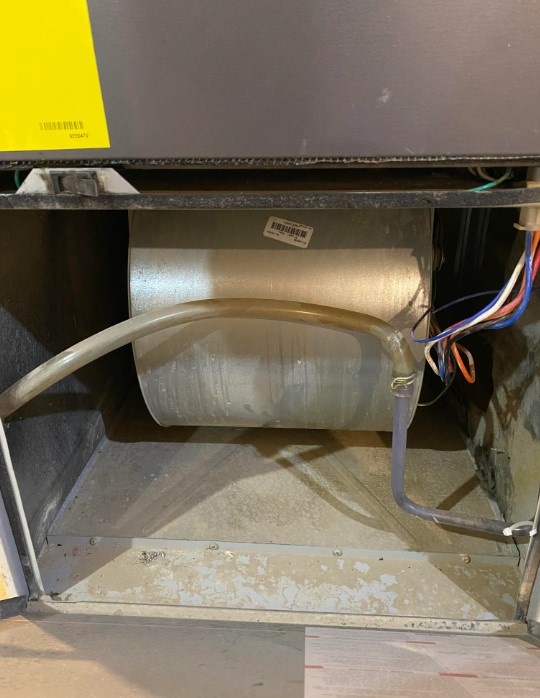
To protect yourselves, wear gloves and a mask as furnace filters can accumulate dust, debris, and even harmful particles.
With the old filter safely removed, take a moment to check it out. Is it full of dirt and grime? It is time for a replacement.
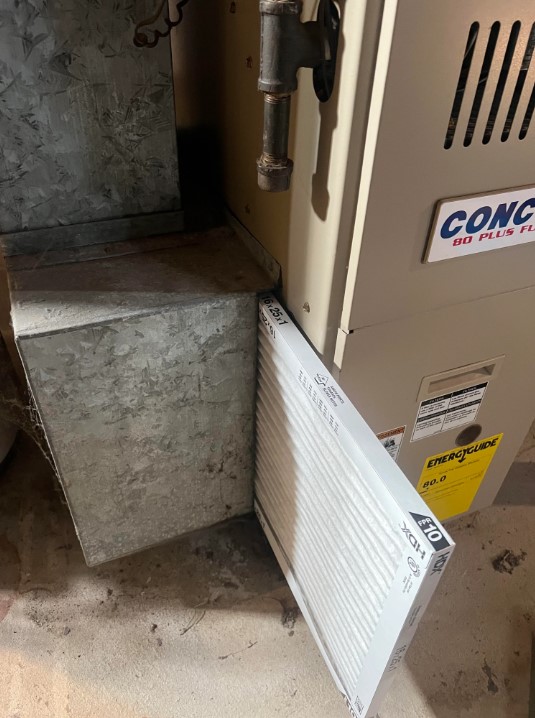
For the new filter, check the manufacturer's instructions to ensure you have the right size and type for your furnace. Slide the new filter into the slot, making sure it fits and is in the correct orientation. Follow the arrows printed on the frame that indicates the airflow direction.
Once the new filter is in place, make sure the access panel is securely back in its place. A loose panel could lead to air leakage, reducing the filter's effectiveness and potentially causing issues with your HVAC system.
Note the date of the filter replacement on a piece of tape and stick it on your furnace. This way, you will always know when it is time for the next change. Regular replacements, usually every three months or as recommended by the manufacturer to keep the system running.
Now that you understand how filter conditions vary with use, it calls for regular inspections and monitoring! By keeping an eye on your filter's condition, you can catch any signs of wear and tear early on.
Incorporating furnace filter inspections into your maintenance routine is a game-changer. It helps you stay ahead of potential issues and ensures your HVAC system runs smoothly year-round. Plus, it is a cost-effective way to improve your indoor air quality
2. Proper Filter Selection
This step of selecting an effective filter for the HVAC system can be challenging. To help you find the right fit, we have simplified some key factors to consider.
The first one is filtration efficiency which determines how well the filter can trap dust particles, allergens, and other airborne particulate. This is easy if you keep an eye out for the MERV rating (Minimum Efficiency Reporting Value). The higher the MERV rating, the better the filter is at capturing particles.
Next, you need a furnace filter that is compatible with your HVAC system to keep everything running smoothly. Before you invest, check the manufacturer's recommendations or consult with a professional to ensure you are choosing the right furnace filter.
Once this is done, you now have different types of furnace filters to choose from. The market offers a variety, each comes with its own advantages. These vary from fibreglass filters to pleated filters, washable filters, and even electrostatic filters.
Lastly, it is essential to consider air filtration standards when selecting a furnace filter. Filters should meet specific industry standards such as ISO 16890, an international test standard for air filters that guarantee performance and reliability.
As we progressed through the blog, we learned a great deal about furnace filter maintenance and how vital it is for a healthier and more efficient home. By staying on top of furnace filter maintenance, you are actively contributing to air quality improvement.
Clean filters trap dust, allergens, and pollutants, preventing them from circulating in your living spaces. The impact of regular filter changes on the HVAC system is reflected in improved efficiency and fewer breakdowns.
As discussed earlier, the recommended frequency for changing furnace filters depends on the type of filter, household size, and environmental conditions. Our final recommendation for filter change frequency is based on good practice - replace your filters every 90 days.
Keep an eye on your filters and inspect them regularly. If the furnace filters look dirty or clogged, it is time to change!